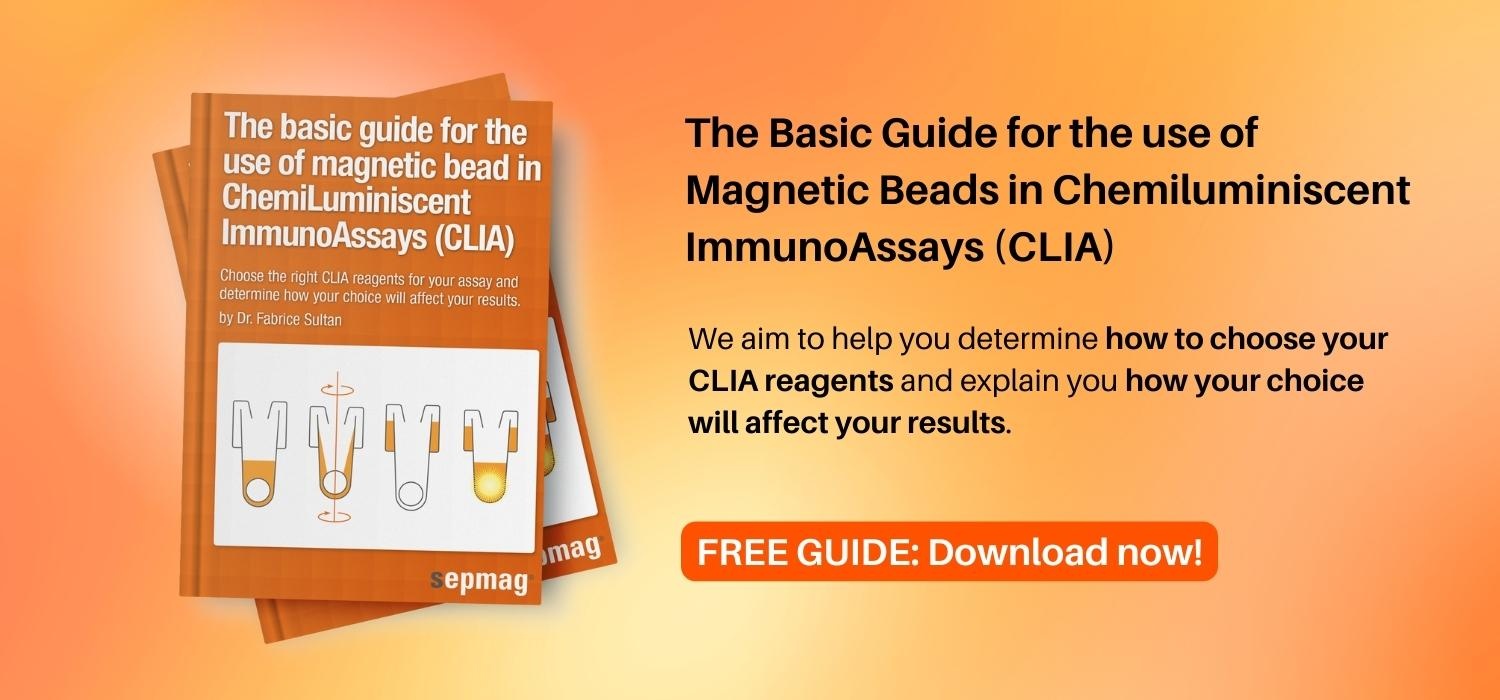Introduction to Chemiluminescence immunoassays
One of the most promising applications of magnetic nanoparticles in medicine is their use for killing cancer cells by hyperthermia. You can place the nanoparticles in the right place by functionalizing them with antibodies specific to the membranes of the cancer cells and/or applying a magnetic field gradient to focalize them in a predetermined region of the body. If you apply an alternate magnetic field, the nanoparticles will heat and, they will kill the cells they are attached to. With the appropriate intensity and frequency, the increase in temperature will just be a few degrees and the effect would be very localized and selective.
A lot of research is ongoing on the physical geometrical arrangement of the nanoparticles, their magnetization switching, and the heat release (usually known as specific adsorption rate, SAR). Magnetic nanoparticles having unsymmetrical geometries, known as anisometric MNPs, could be the ideal agents to optimize the response to external AC fields for magnetic fluid hyperthermia.
In a recent paper published at Nanoscale (H. Gavilán et al, How size, shape and assembly of magnetic nanoparticles give rise to different hyperthermia scenarios, Nanoscale, 2021, 13, 15631–15646) a multidisciplinary group of European researchers has reported experimental data of heat released by Magnetic Nanoparticles using a wide range of anisometric shapes and their assemblies in different media.
The researchers of the ICMM/CSIC, Istituto Italiano di Tecnologia, Aristotle University of Thessaloniki, University of York, ICMAB and Universidade de Santiago de Compostela, studied the MNPs either acting as individuals or assembled through a magnetic-field-assisted method.
The authors reveal the potential of anisometric shapes beyond the classic cubic NPs and nanoflowers, especially disk and spindles produced by hydrolytic synthesis routes, whose assemblies achieve SAR values as high as 1400 and 1300 W/g, respectively, in viscous (100 mPa s) media that mimics tumor microenvironments.
The potential effect of an external DC magnetic field on the behavior of these nanoparticles has been studied by using a Sepmag Q500ml and its monitoring electronics, measuring the time-dependence of turbidity of highly diluted water dispersion ([Fe] = 0.03 mg mL). The constant radial magnetic force of the system allows the analysis of the separation process of the different nanoparticles, correlating the response with the magnetic moment per particle, the hydrodynamic size, and the magnetic interactions.
The magnetophoretic curves in constant magnetic force show that the disks are very susceptible to the applied magnetic field: they separate very quickly. The authors attribute this behavior to a large hydrodynamics size and the quick formations of chains due to the high magnetic moment per particle.
Spindles show also a short t50 (the time needed for achieving 50% of the turbidity), but a smaller slope, indicates a weaker tendency to form chains. The smaller spindles, with a smaller magnetic moment by particle, show a still slower separation.
The flowers show a similar behavior: larger flowers separate faster, but the small ones seem to be extremely slow, indicating a weak interaction and probably not a strong cooperative magnetophoresis.
The Magnetic Hyperthermia efficiency of these anisometric magnetic nanoparticles was experimentally compared with cubic nanoparticles. This geometry and the nanoflowers have demonstrated unrivalled hyperthermia performance, but the results reveal the potential of other anisometric shapes, especially disks and spindles. Attending to the SAR data normalized by the particle volume, small spindles stand out as efficient nanoheaters.
In the paper, the characterization in viscous media mimicking the tumor microenvironment use conditions above the clinical safe limit. However, the nanoflowers and spindles (the most promising morphologies) have been already characterized with clinically relevant field amplitude and frequency conditions (10–50 mT and 100–200 kHz). The nanoflowers SAR values 500 WgFe-1 (H×f=4.40×109 Am-1s-1) for a size of 24 nm and the spindles, 400 W gFe-1 (H×f=4.80×109 Am-1s-1) for the dimensions of 87×16 nm.
These results open the possibility to still enhance those values, even in viscous media, through the pre-assembly forming nano-sized chains. In the case of the flowers, the SAR will improve when they are oriented parallel to the applied alternate magnetic field, for the spindles when oriented perpendicular.
Related news
- Chemiluminescent serological tests
- Protein purification: the step-by-step process
- Magnetic beads vs Agarose beads




